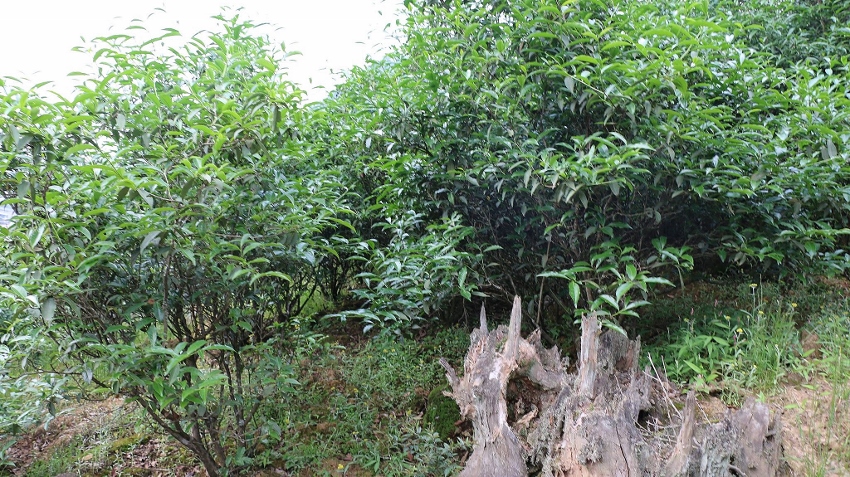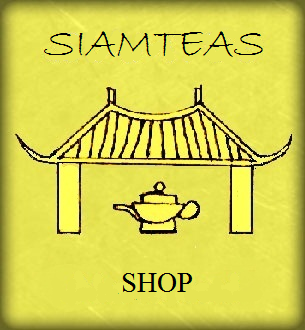
Tea… what is it?
Tea is an infusion beverage derived from the tea plant, “Camellia Sinensis”. In contrast, infusion beverages based on other herbs, fruit or spices are actually not tea. However, in English and some other western languages, the term “tea” is often used for such “tisanes”, too. For example, “chamomile tea” …
However, the origin of the word “tea” is actually clear… Originating from a Chinese dialect, it was first brought by the Dutch from China to Europe by sea together with the tea itself (the one from the tea plant!) in the 17th century. When the British took over the tea trade between China and Europe in the 19th century, they adopted the term. Accordingly, “tea” became the word for tea in all languages of countries and cultures at the stopover and end points of that sea trade route. That is, most languages established their own adaptions of it… Examples for such adaptions are ‘thé’ in French, ‘thee’ in Dutch, ‘té’ in Spanish and ‘Tee’ in German.
In turn, where tea from China has reached foreign countries on the land route, it is the (also Chinese) word “Cha”, which has coined the corresponding terminology in the languages of the countries and regions along the way. Examples for this would be the Indian word ‘Chai’ or the Turkish word ‘çay’. Moroccan language use illustrates the described effect most nicely. Because in Morocco, which is within the sphere of influcence of both by the ancient land and sea route of tea, there are two words for tea: ‘Atay’ (von ‘Tee’) und ‘Kahwa’ (from ‘Cha’).
The Tea Plant – Camellia Sinensis
Originally, the Camellia Sinensis comes from Southeast Asia. Its evolutionary “cradle” there comprises the region of present-day China, Myanmar, Laos, Vietnam, northern Thailand, and the northeastern tip of India. In these countries, ancient tea trees grow up to 20 meters high, with up to 15cm long leaves. However, thanks to its adaptability to different “terroirs” (interplay between climate and soil), the tea plant has since “conquered” more regions both in Asia and in the whole world. Most of the resulting subspecies of Camellia Sinensis don’t reach tree height, but grow as bushes of different heights.
The propagation of the tea plant can take place in two possible ways. One of these is the propagation through the seeds of the tea plant, and the other is through the cultivation of cut-offs, so-called “clones”. Now, advantages of the progagation through cut-offs are the higher number of potential “descendants” and shorter time to picking maturity. However, the method prevalent today in commercial tea cultivation also has disadvantages. So, the roots of the clones grow on a relatively superficial level only. In contrast, the strongly branched roots of tea plants grown from the see reach up to more than 2 meters deep into the soil. It is therefore often said that seed-grown tea plants have a richer supply of active ingredients than clones.
In commercial cultivation, in order to maximize accessibility and yield, tea plants are cut back once a year. At this, the exact height of the cut-back depends on a plant’s age and variety. After the cut, the tea plant drives new shoots at the cutting points. This considerably increases the amount of tea leaves eligible for picking – and thus the yield.
Varietal Diversity = Diversity of Tea
Both evolution and commercial cultivation were driving motors behind today’s great diversity of tea plant varieties and cultivars. Roughly, we can divide these into 4 major subspecies:
- Camellia Sinensis Sinensis (small-leaved)
- Camelia Sinensis Assamica (large-leaved)
- Camellia Sinensis Dehungensis (large-leaved)
- Camellia Sinensis Pubilimba (large-leaved)
Furthermore, depending on the respective place of origin and the type of cultivation, there are virtually inumerable sub-varieties in particular of the Camellia Sinensis Sinensis. In this regard, it is important to know that any variety will produce a comparable tea, i. e. remain true to itself, only under comparable terroir conditions. Therefore, many teas are “origin-bound”. Good examples for such include Wuyishan rock teas and Hangzhou Long Jing tea, as well as Darjeeling teas.
Now, terroir and variety are not the only factors contributing to a specific tea’s identy. Depending on the processing method, we further differentiate between 6 processing categories of tea:
- green tea
- black tea
- white tea
- oolong tea (also: ‘blue tea’)
- yellow tea
- pu erh tea (also: ‘dark tea’)
More about this and what else is responsible for the exact “type” of a tea in your cup and its respective qualities is the topic of My Little Tea School’s Lesson 2 : What Makes the Tea in your Cup?.
Recommended sources and accompanying materials
As accompanying materials for this lesson 1 of My Little Tea School, I recommend reading he following richly illustrated ind-depth articles in Siam Tea Blog:
- What actually is tea? – Camellia Sinensis vs. “tea-like” products
- Origin and evolutionary spread of the tea plant within China and beyond – the 1000 faces of Camellia Sinensis
- Teas and their Tea Plant Varieties and Cultivars
One more thing, on my own account…
If you want to support the maintenance and further development of My Little Tea School – the ABC of Tea… Just buy your teas from
Finest single variety / single garden / single picking Teas
from all over the world
Great Selection of Artisan Teas








